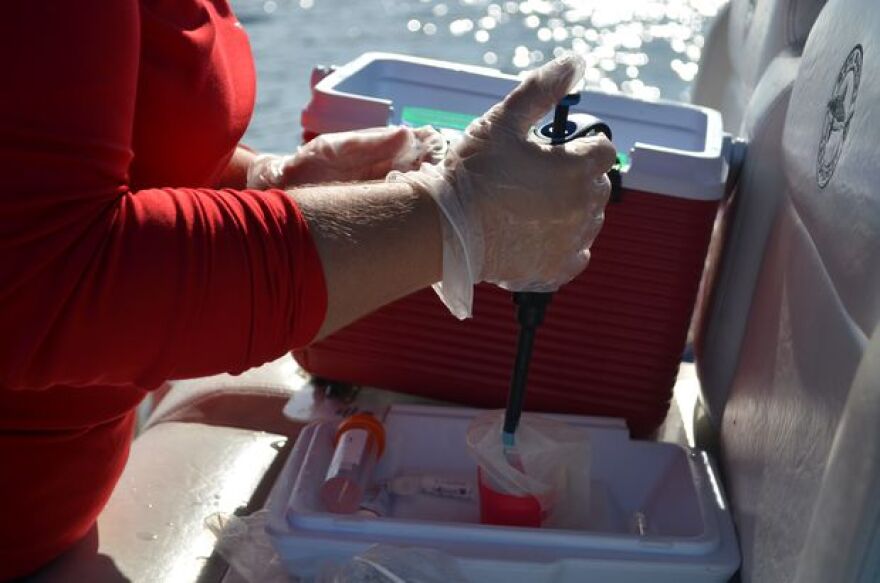Red Tide blooms have plagued Florida for hundreds of years at least, and scientists say they are not going anywhere.
But could they get worse?
It’s certainly possible in a warming world. The first problem is scientists don’t know enough now to predict what will happen.
“There’s a lot of speculation that climate change is going to impact Red Tides,” said Cynthia Heil, director of the Red Tide Institute at Mote Marine Laboratory & Aquarium.
RELATED: Red Tide’s return raises fears about the health of Tampa Bay
Researchers are “at the very start” of studying how shifting conditions could affect blooms, Heil said. After years of inconsistent funding, even more immediate questions remain outstanding, like what exactly ends a bloom and what causes Red Tide to vary so much in severity from year to year.
Meanwhile, the region around Tampa Bay has experienced its second devastating bloom since the beginning of 2018.
“It’s always: Well, it’s complicated,” said Don Anderson, a senior scientist at the Woods Hole Oceanographic Institution. “And that’s certainly the story here.”

Out of tens of thousands of algae, Anderson said, it’s difficult to pinpoint how any one species will respond to a changing climate. The Red Tide that typically devastates the gulf coast near Tampa Bay consists of a microscopic organism called Karenia brevis.
More intense rainfall is one obvious way climate change could affect Red Tide. Blooms feed upon nutrients, especially nitrogen, that get dumped into waterways in excess via runoff from people’s fertilizer-coated yards and leaky septic or sewer systems. More rain coming in heavy storms could worsen the runoff problem and supply Red Tide with more nutrients.
“What would have been a natural phenomenon is subject to exacerbation on failure of effective management,” said Douglas Rader, chief oceans scientist at the Environmental Defense Fund, an advocacy group.
RELATED: Red Tide isn’t just bad for fish, as a Tampa Bay man learned in the ER
Some predictions suggest Florida will see more severe droughts followed by intense deluges in the wet season, said Lisa Krimsky, a water resources specialized agent with Florida Sea Grant.
“Both of those could potentially influence Karenia brevis for the negative to us,” she said.
Droughts lower river levels, meaning less freshwater flows into bodies like Tampa Bay. The estuary becomes saltier, and this higher salinity can be conducive to Red Tide. A dry winter and spring is thought to be one factor why a bloom traveled so high up in the bay this year.
Warming ocean temperatures are yet another way conditions could change. But Karenia brevis has shown it thrives in a range of temperatures, researchers said, and slight fluctuations may not have a big effect. Major changes could even make the water so hot that it becomes less hospitable to the algae.
Studies have been inconclusive on whether increases in carbon dioxide, a major contributor to global warming, will affect Red Tide directly, said Krimsky, of Florida Sea Grant. Carbon dioxide is emitted to the atmosphere when people burn fossil fuels.
RELATED: Is Red Tide hurting Tampa Bay tourism?
Red Tides usually show up off Florida’s west coast in the fall, said Rick Stumpf, an oceanographer at the National Oceanic and Atmospheric Administration. He called it “a bit concerning” that 2021 has brought a summertime bloom only three years after the last such Red Tide hit the region.
It is far too early, though, to know whether persistent outbreaks will become common, Stumpf said, or whether that would have a connection to climate change.
“I’m hoping it’s just a fluke,” Stumpf said. “We’re going to look into this. We’re going to try to investigate to see if we can sort out any patterns.”

These Red Tide theories will take years to vet, and they only contemplate one of multiple harmful algal blooms that trouble Florida. While Red Tide is a bane for the central gulf coast, blue-green algae are a problem elsewhere, particularly Lake Okeechobee and the St. Lucie, St. Johns and Caloosahatchee rivers.
The cyanobacteria in such blooms proliferate in hot conditions, said Anderson, of Woods Hole.
“There will be winners and losers, and right now the only obvious winners are going to be the freshwater cyanobacteria,” he said.
Though the science around Red Tides is less settled, Anderson said, Florida is better positioned than anywhere else to help researchers find answers. The state holds a substantial record of water quality data from past blooms, covering several decades.
“At some point there will be information that can be mined out of that,” he said.
This story was produced in partnership with the Florida Climate Reporting Network, a multi-newsroom initiative founded by the Miami Herald, the South Florida Sun Sentinel, The Palm Beach Post, the Orlando Sentinel, WLRN Public Media and the Tampa Bay Times.


